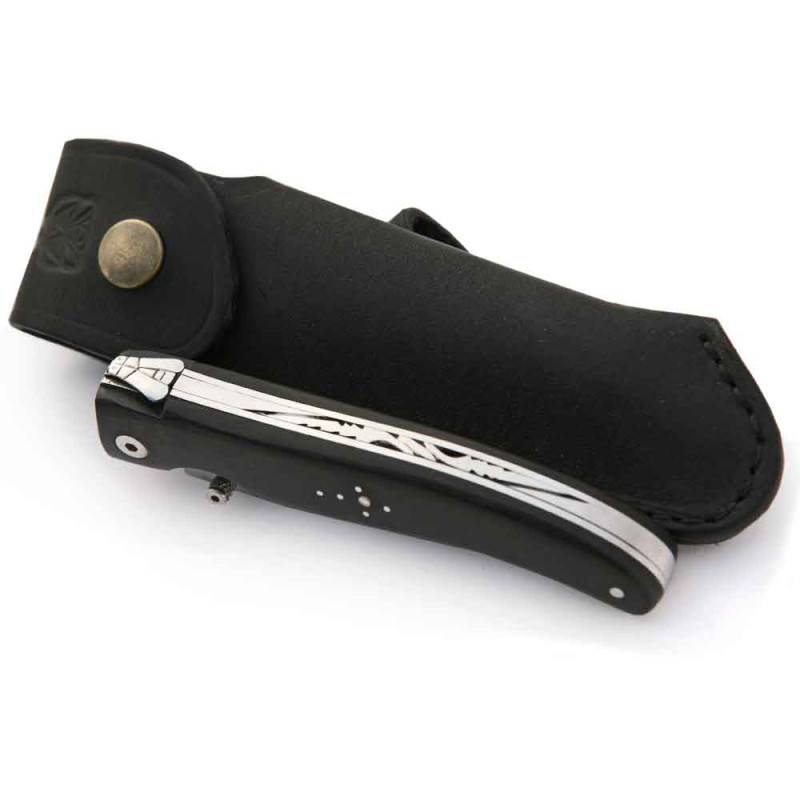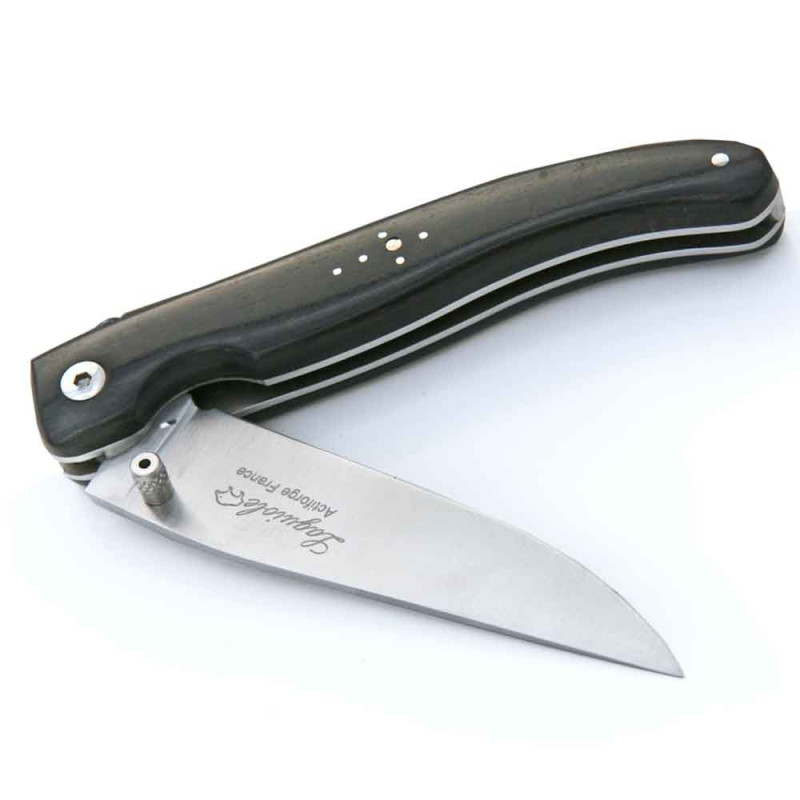









Product customization
Don't forget to save your customization to be able to add to cart
We guarantee this knife and its components for life.
We deliver all over the world.
We will provide you with a return label within 30 days if this item is not to your liking
This knife can be re-sharpened by us at any time during its service life.
This knife comes with a certificate of origin attesting to its provenance.
Ebony is a wood from tropical regions of Africa. Its colour ranges from dark brown to black, and sometimes it has a marble effect or a completely solid colour.
Ebony is a fine-grained fatwood. It is used for knife handles because it has a good resistance to humidity. It is a particularly reliable material for Laguiole handles because it also resists mould meaning that it is practically rot-proof.
When was ebony first used?
The use of this hardwood for ornamental purposes dates back to ancient Egypt where carved ebony can be found in royal tombs. At the end of the 16th century, ebony was highly sought-after for the production of delicate cupboards with bas-relief sculptures depicting religious or traditional scenes.
What is ebony used for in modern times?
In the modern age, ebony was used for small decorative objects. Some of the most common examples of this were crosses and religious apparel, musical instruments, such as piano keys and guitar fret boards, plectrums, chess pieces and, of course, knife handles!
How to care for ebony?
Simply wipe it with a damp cloth to clean. Never place a knife with a wooden handle in a dishwasher.


check_circle
check_circle